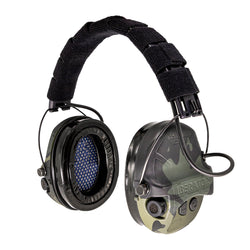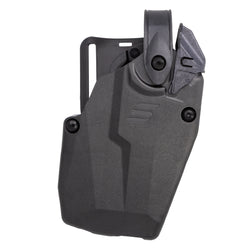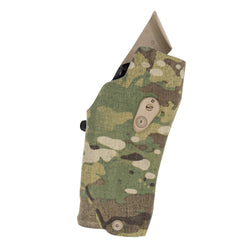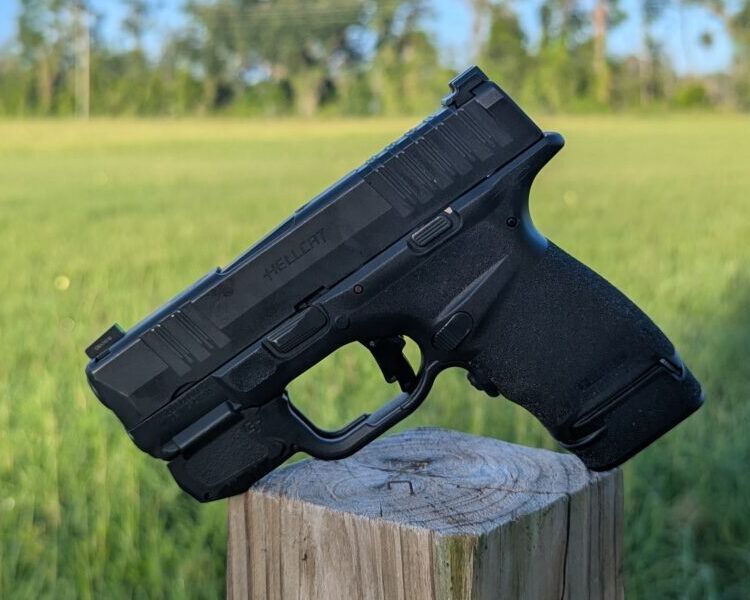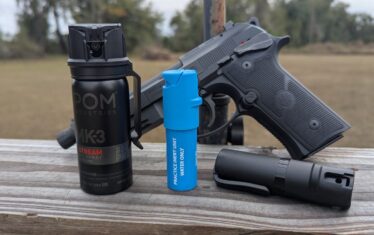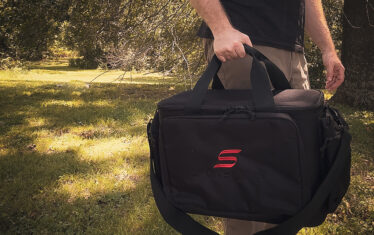Every time something’s called a Hellcat, I tend to appreciate it even more. We’ve got muscle cars, WW2 fighter planes, and a micro-compact handgun from Springfield Armory. The Sig P365 revolutionized the micro-compact genre, and Springfield gave them some competition in the form of the Hellcat, the second micro-compact to hit the market.
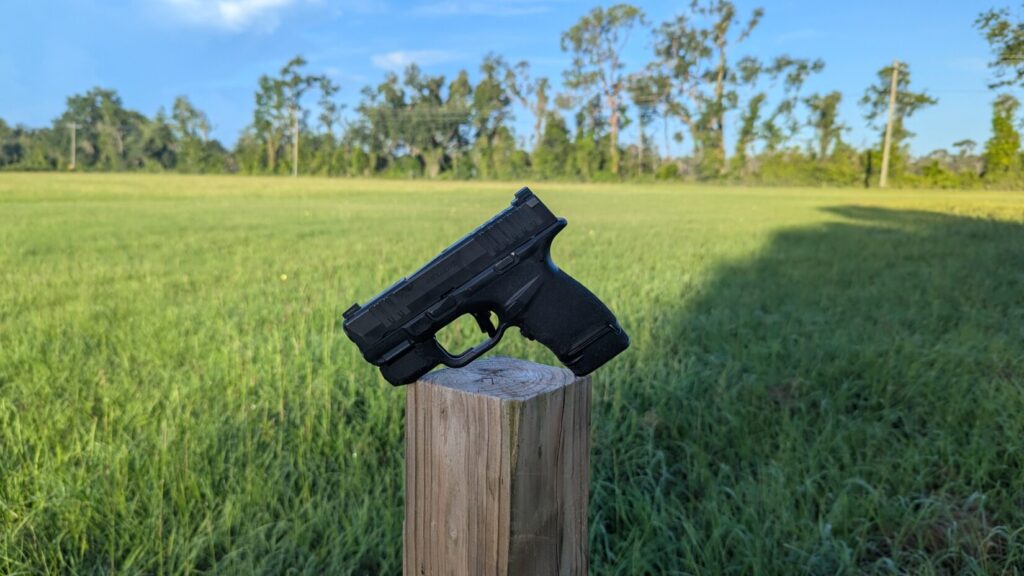
The Springfield Hellcat is the product of the partnership between the U.S.-based Springfield Armory and the Croatian firm known as H.S. Produkt. Besides being a cool way to spell Produkt, they make a wide variety of guns, including the VHS-2 and the Kuna SMG, for various police and military forces.
The Hellcat could be seen as an extension of the XD series, but I don’t think that’s fair. Yes, it shares a polymer frame and striker-fired action, but it’s better viewed as an evolution of the XD line rather than an extension of the XD series.
Springfield Hellcat Features and Specifications
This evolution features a “stack-and-a-half” magazine, combining a single and double stack magazine for an efficient mix of capacity and concealment. The grip is only an inch wide, but the flush-fit magazine holds 11 rounds.
Springfield also includes a 13-round magazine that’s slightly extended. For restrictive states, 10-round magazines are an option. Additionally, Springfield produces 15 and 17-round magazines.
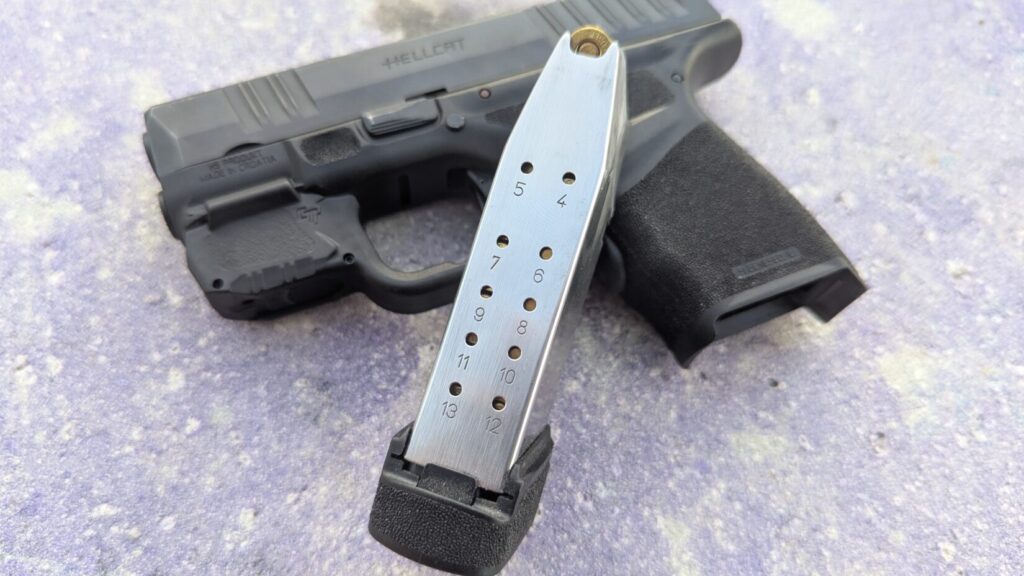
The Hellcat series has evolved into a full lineup: the slightly larger Pro model, the optics-ready OSP, and the RDP, which is also optics-ready and comes with a compensator. I have the bare-bones model of the Hellcat.
This model lacks an optics-ready slide, but includes a rail for small lights, lasers, and similar accessories. I adore the high-visibility front sight. It has a big, bright yellow insert, and sitting dead center is a tritium vial. It’s highly visible in any lighting condition.
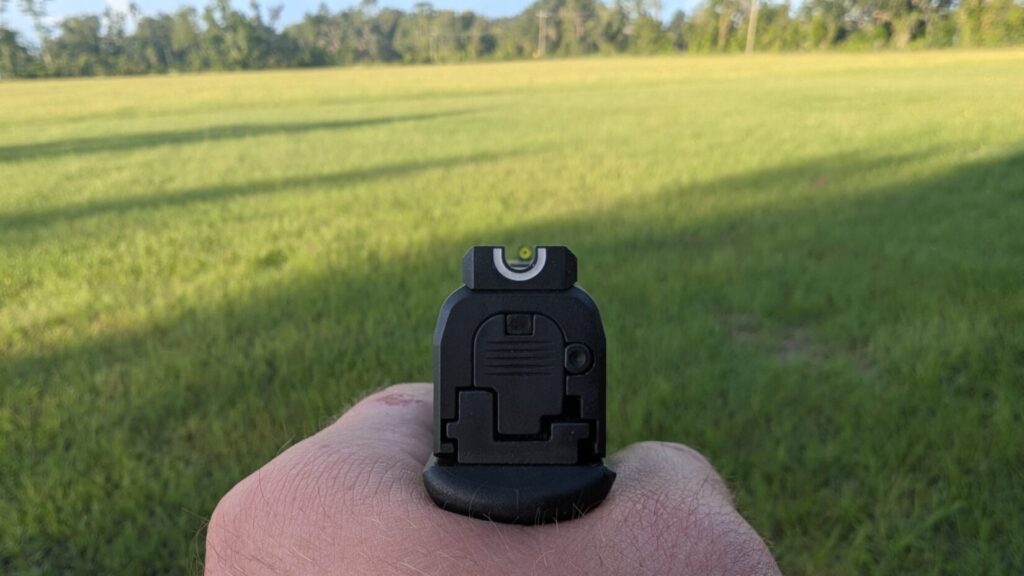
The gun also has a loaded chamber indicator, aggressive slide serrations, and a reversible magazine release. Under the barrel is a small protrusion housing the guide rod—this serves as a standoff device so the slide won’t move out of battery if pressed into a target. It’s an easy feature to overlook but a valuable one.
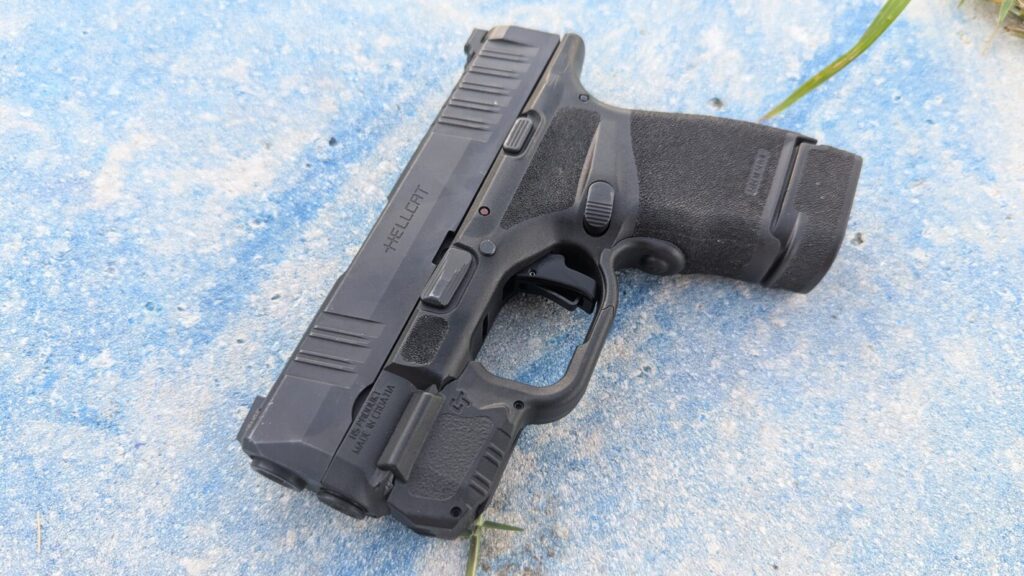
Specs
- Barrel Length: 3 inches
- Overall Length: 6 inches
- Weight: 17.9 ounces
- WidthL: 1 inch
- Caliber: 9mm
- Capacity: 11/13 rounds
Hellcat Ergonomics and Handling
The Springfield Hellcat uses an overall excellent grip texture called “Adaptive Grip Texture.” What I like about this grip texture is that it manages to be both aggressive in the hand but soft on the body. It only feels aggressive when you grip it tightly. It grips back and stays tight when handled. When you start shooting, the gun doesn’t slide in your grip.
As a resident of Florida and the owner of a pair of sweaty hands, I appreciate a nice, aggressive grip texture.
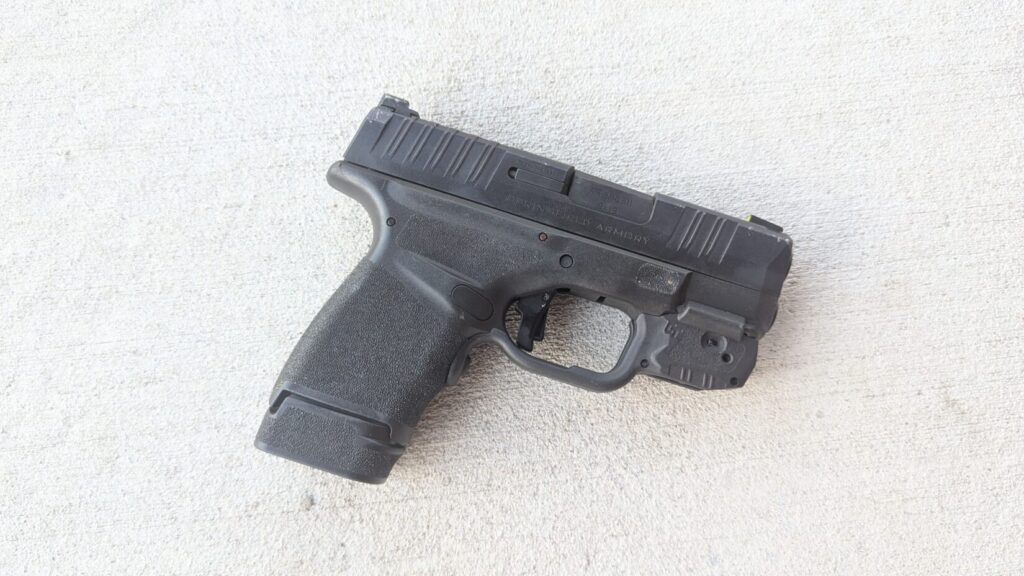
On the flip side, when carried IWB or AIWB, the texture doesn’t irritate your skin or become painful. It’s the best blend of aggressive texture for shooting and soft texture for carry.
The Hellcat’s grip allows and encourages a high hold. The rear overhang lets you choke up on the gun and protects you from slidebite. The trigger guard undercut keeps things comfy for that high grip as well.
I have big hands, so the flush-fitting grip is too short for me. I use the 13-round magazine to extend the grip. The downside to this magazine is that my pinky can trap the magazine during reloads, slowing me down.
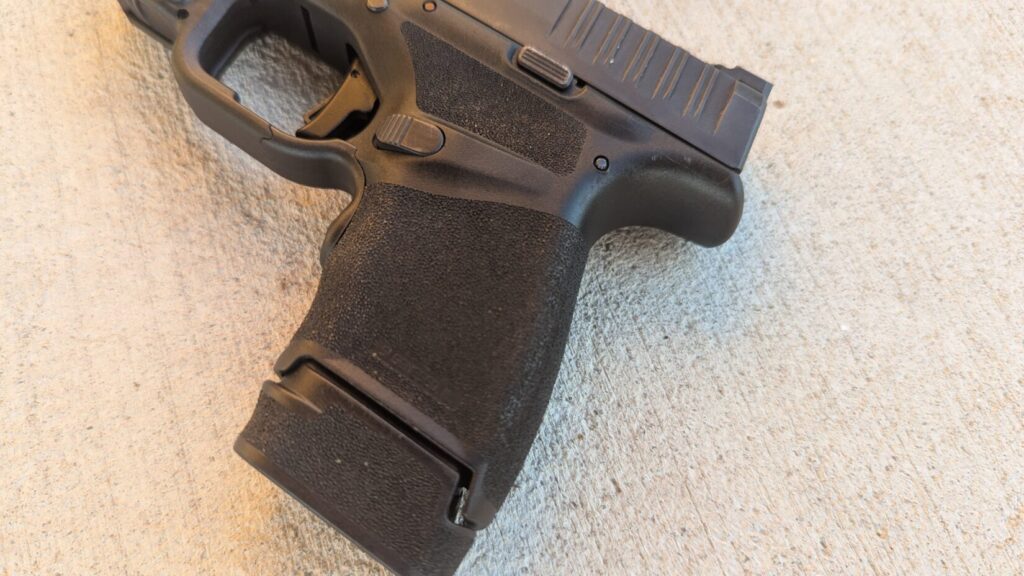
The large magazine release gives the gun a nice touch, but the slide release isn’t all that impressive. It works, but it’s small.
H.S. Produkt also scalloped the sides of the grip to produce an incredibly comfortable and exceptionally thin grip. Overall, the ergonomics of the Hellcat are sufficient and capable for a defensive handgun. It’s not perfect, but there was a clear effort to produce an ergonomic handgun.
Dropping Lead With the Hellcat
The sights are a standout with the Hellcat. I’ve already discussed the front sight and how easy it is to see. That bright yellow front drops inside the U-notch of the rear sight, making it easy to get shots on target quickly.
Accuracy at Various Differences
I can snap behind the front sight for precision-oriented shooting at longer ranges. I can ring a steel gong at 25 yards with speed. At the beep of a shot timer, I can start at low ready and put five rounds on a 10-inch gong in less than four seconds.
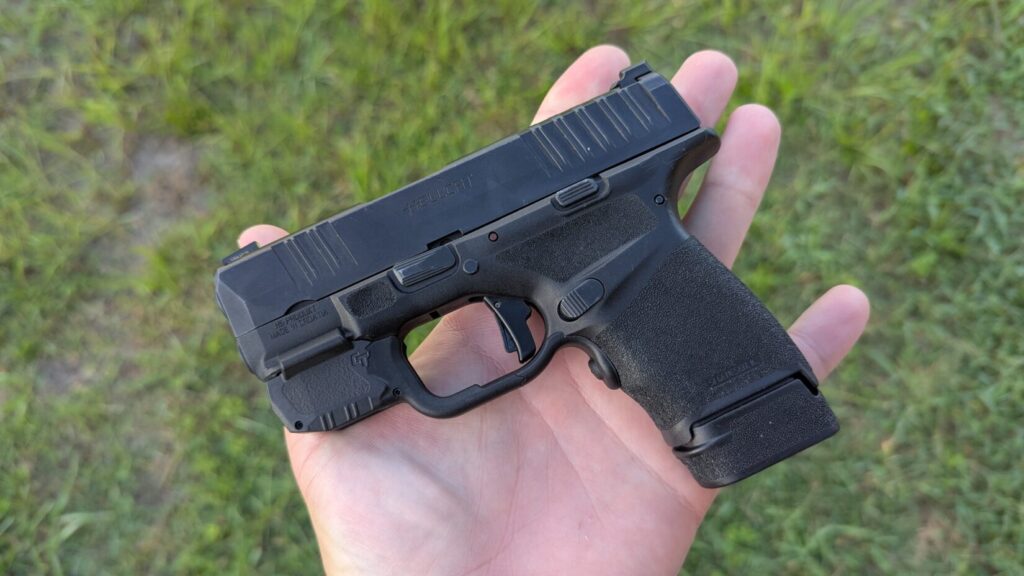
At 50 yards, I can hit an IPSC-sized steel target, but that takes a little more time and effort. I also am not hitting it with every shot, but most of them. Toss a red dot on this thing, and I think I could clean up a bit more.
At 15 yards, my groups stay under four inches wide and are easy to consistently produce. For up-close shooting, you can use a stress sight picture with a more target-focused approach. Just put that slightly blurry front sight on target and let it rip.
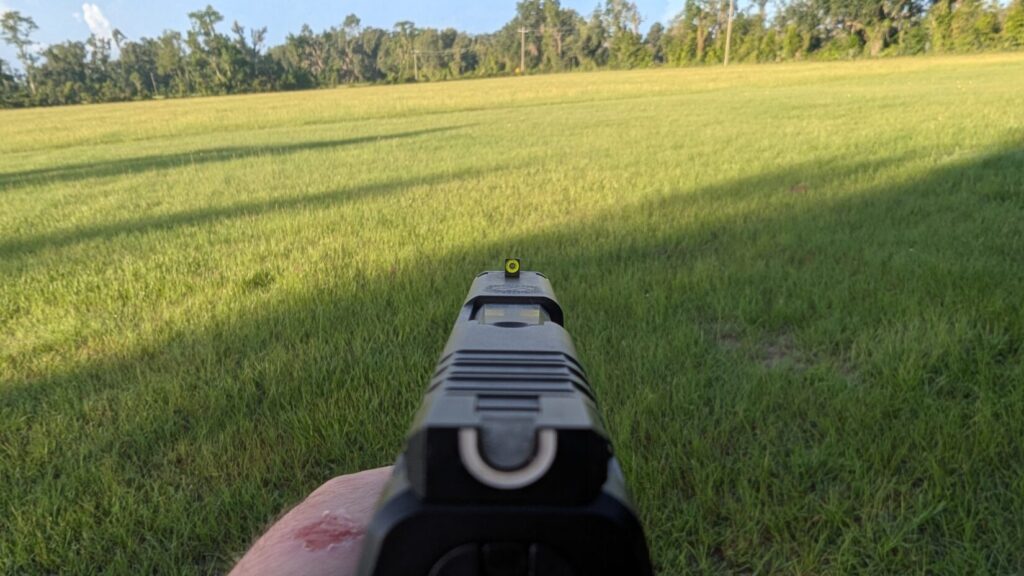
The cold hammer-forged barrel delivers tight, and the striker-fired trigger is light and crisp. While the stock trigger was fine, I replaced it with an Apex model to refine it a bit further.
Shooting Speed and Control
Like its muscle car and fighter plane namesakes, the Hellcat likes to go fast, and it does it pretty dang well. The aggressive grip texture and high grip make it easy to hold onto while you’re shredding ammo downrange.
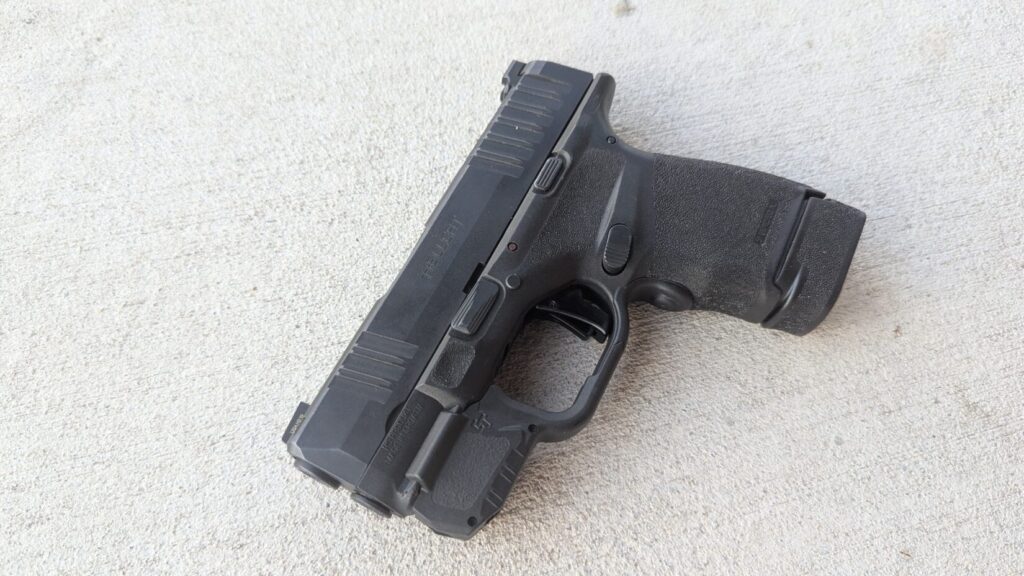
The ability to quickly track the front sight makes it easy to put those shots on target. You can turn that front sight into a bright yellow blur and blaze a magazine’s worth of ammo. Those sights are easy to see off the draw, and driving them from target to target is easy.
A defensive gun should be capable of going fast, and the Springfield Hellcat hits that mark.
The Hellcat: Not an Imitator
While often compared to the P365, calling the Hellcat an imitator isn’t fair. It may have been the second micro-compact to market, but it has carved out some distinct advantages and has come into its own.


